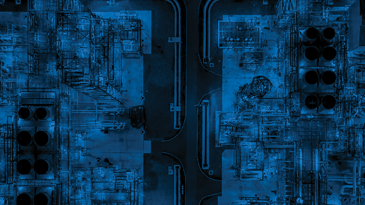We’ve already talked about the need to drive reliability from a cultural level, applying lean manufacturing principles to get Operations and Maintenance working together. That needs to be powered by a capability to predict asset failures earlier and with greater accuracy.
Earlier Insights With Low-Touch Machine Learning
Many companies today rely on data scientists building model after model of assets to simulate scenarios. It’s not sustainable. Outputs come too late and still require consultants to interpret the correct course of action. In a survey we conducted, lack of expertise was cited as the top barrier to adopting analytics. Over one-third of respondents said they had no data scientist personnel in the organization.
Low-touch machine learning has emerged to solve this. It’s a disruptive technology, where agile and flexible software learns and adapts to real conditions. Systems become automatic, incorporating all the nuances of real asset behavior for months of advanced notice on failure.
We’ve already seen a number of impressive real-world applications of machine learning in the process industries. At a large North American oil and gas refinery, the Aspen Mtell® solution gave eight weeks’ notice on a compressor failure — a full seven weeks before its state-of-the-art vibration system detected the impending failure. We have seen similar results at other locations around the world, including a recent pilot in Thailand that showed almost identical results versus a vibration monitoring system (it was actually slightly more than seven weeks ahead in that case).
Including Process Data to Find the Earliest Precursors
In that same survey, 72 percent identified “maximizing uptime” as the top benefit from analytics. But with most failure being directly related to process operations, early warnings require more than condition and maintenance data.
Companies have gone as far as they can with condition-based monitoring (CBM), which is incapable of identifying the process-induced conditions causing the bulk of the breakdowns. Predictive maintenance requires looking upstream into process data.
Low-touch machine learning can deliver comprehensive monitoring of all the mechanical, upstream and downstream process conditions in a far more scalable way than data scientists or CBM. The result is hyper-accurate predictions of production degradation that ultimately leads to asset failure. These insights are what’s needed to get Maintenance and Operations working together to drive reliability.
Automate the “Grunt Work” of Variable Selection and Data Management
Our survey also found that 40 percent of companies believe digitization can save 16 percent or more of operating expenses (OPEX). By tearing down silos of information and creating a more comprehensive view, companies believe they will drive better — and faster — outcomes. While hugely promising, any organization that’s attempted this massive data analysis has run into issues around collection, timeliness, validation, cleansing, normalization, synchronization and structure.
With data preparation consuming 50-80 percent of the time in analysis, automation will be required for improvements in the speed of decision-making. The more an organization can democratize the use of data by automating grunt work, the more it can do to get value out of data.
Organizations can’t just digitize everything and hope it delivers success. They need to remove barriers to ROI by collecting the right data and automating the hard stuff, rather than just throwing tools and data at people. Any partner an organization chooses in their digital transformation journey should have experience in managing data and information across design, operations, maintenance and the supply chain.
Low-touch machine learning that expands the breadth of data used while reducing reliance on analytics expertise is the difference between late-stage maintenance fixes and an organization that works together to proactively avoid process conditions that cause damage and maximize uptime.
To learn more about how advanced technologies are leveraging predictive analytics to drive asset optimization, take a look at my recent white paper, “Low-Touch Machine Learning is Fulfilling the Promise of Asset Performance Management.”






Leave A Comment